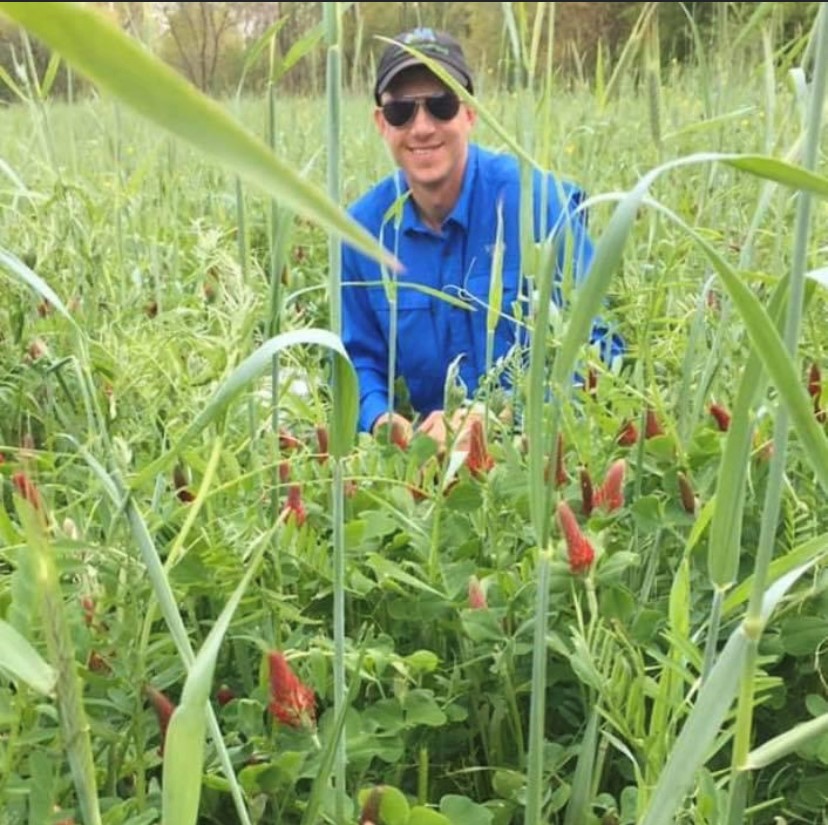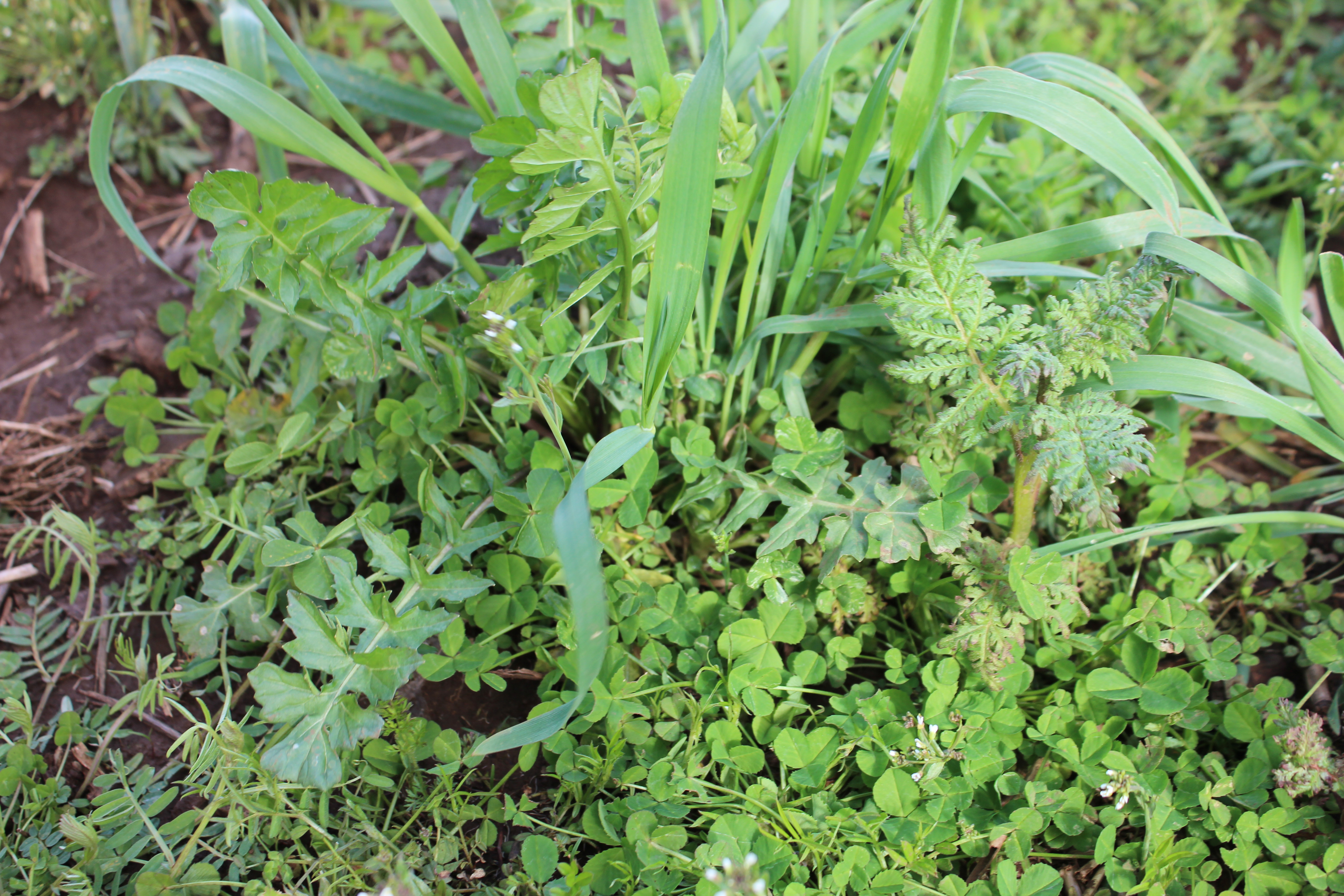By Brent Jones, Sales and Iowa Research Farm Manager for GO SEED
Last month, southeast Iowa cash and livestock producer Michael Vittetoe shared his insight into how his family farm has used cover crop trials to integrate new practices into their operation. In part two of this two-part Cover Crop Corner series, cover crop consultant David Kleinschmidt discusses key factors producers need to consider before setting up a trial, and what data to collect.

Trial work is integral to the work cover crop consultant David Kleinschmidt does to improve soil health and growing conditions for a more holistic and profitable approach to farming.
Throughout his career, David has helped countless agricultural producers in his position with Understanding Ag. The consultancy group specializes in helping all sectors of agriculture adopt regenerative practices throughout Mexico, the US and Canada.
Cover crops are integral to David’s work of improving soil health and growing conditions for a more holistic and profitable approach to farming. One recent example that comes to mind is helping a corn producer reduce input costs by $45 per acre while only giving up a 5bu per acre yield. When pinning the reduction of the input costs against the yield, the profit margin on the new approach was significantly greater than chasing after yield. And this was without configuring the production benefits the improved soil status would have long term.
Farm trials are an integral part of David’s work to identify what species work in specific environments and what unique benefits they provide.
- Identify your goals – Before any trial work begins, David says it is essential that all members of the business sit down and decide what goals they are trying to achieve with cover crops and specific practices. Having everyone on the same page as to what the priorities are can be the difference between a "successful" trial and a "failure." Once everyone has similar priorities, trials need to be set up to specifically meet those goals.
- Identify testing areas – Farm trials need to be done on land that is representative of the entire farm, so it is applicable large scale. David says this should be 10% of the entire farm’s acreage, conducted on average land. He has seen producers take poor land out of production to use for trials, which automatically set them up for failure. If possible, the land should be split in the same field for improved visual comparisons and more equality in growing conditions.
- Keep an eye on multiple data points – While producers need to be collecting data based on their goals, they also need to be keeping an eye on what else is happening in the plot. If they’ve set the trial up for grazing, for example, they need to make note of how this impacts any other challenges the farm may have, such as water holding capacity’s impact on erosion. Comparing the different interactions will help determine if the trialled practice is going to benefit the system or elevate smaller issues.
- Soil test and then test again – Aside from the standard suite of performance data producers should be collecting, such as maturity dates, yield and required inputs, David is a staunch proponent of soil testing at multiple points throughout the trials. Prior to starting the trial, samples are sent to the lab for a Haney Test to assess total organic carbon, microbial biomass and mineralizable nitrogen. He also sends samples in for a PLFA (phospholipid fatty acids) test to determine proportions of microbial types. All these factors are representative of the soil’s overall health.
Mid-season, a 3x3 foot square of biomass is removed and sent to the lab to understand the C:N ratio and to look at the nutrient uptake each species is bringing to the table.
Later in the season and 30 days after termination, the same 3x3 foot square from the previously sampled ground is removed to compare results. At each of these steps, another Haney Test and PLFA are conducted to see how the different plots impacted soil microbes and nutrient uptake.
- Keep an eye on variables – While variables are unavoidable, data makes them easier to weigh. When starting a trial, record data on the previous crop, including yield, inputs and when they were applied and any known soil health and moisture measurements.
To accurately determine how a plot is performing, David advises trials are repeated for at least three years in the same fields. Within all the data collected, weather events should be tracked to pinpoint how they impacted each crop.
- If necessary, continue trials before scaling it into practice – Three years of collecting data will give hard evidence if a practice is working or not, but sometimes only one or two are needed. If a trial goes well and a producer is confident that it will integrate well broad scale, David says to go ahead and start implementing it into production. On the flip side, if things haven’t gone exactly as hoped but it is showing potential, tweak the trial as necessary and continue collecting data on it.
- A “failed” trial doesn’t mean it was a failure – It’s important to realize that cover crops are not the silver bullet to everything and just because a practice worked for someone else doesn’t mean that it will necessarily work for you in the same way. And when it comes to a trial “failure”, David stresses that context is everything.
First off, if trialling a practice that someone you read about had good results with or even a neighbor is seeing success with, it is important to understand what that person did and how it fits into their operation. Trying what others have is a good way to learn about new applications, but it must be adjusted to fit your unique environment, goals and business needs.
Secondly, go back through the data to understand why it “failed”. Should you have gone with a different variety? Were there significant weather events that stressed the crops out? Before scrapping it altogether, go back through the data and identify where adjustments can be made and then try again.
Getting Trial Ideas
Without a doubt, dedicating resources to cover crop trials is an effective way to integrate new applications into your business and optimize achievable benefits.
Recently, GO SEED launched the Cover Crop Information Map to centralize hundreds of pieces of industry research and farm trial data into one location. Found at gocovercrops.com, users can access raw data on more than 26 different topics of research in a specific geographical location. As David mentioned in his last point, this raw data can give producers more context to the research, allowing them to adapt practices to their own unique challenges, allowing them to reach their own goals more effectively.







Post a comment
Report Abusive Comment